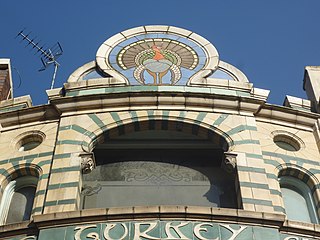
This post was written by Jonathan Cardy, Wikimedia UK GLAM Organiser
A cafe covered in turkeys and a ballet that the critics hailed a turkey; two very different stories from near opposite ends of the twentieth century.
As one might expect of an Internet-based encyclopaedia that has only been around since 2001, Wikipedia has some large gaps when it comes to the culture of the pre-Internet age. We are working hard to address this, and one way is via collaborations with cultural institutions, using their archives and other resources. Another is to partner with like-minded organisations who are releasing content under open licenses.
The Royal Opera House very kindly hosted an editathon for us, providing all the classic ingredients for a great editathon: WiFi, plenty of tables, an archivist with collections of press clippings and other material, and the most opulent setting and poshest sandwiches we’ve yet had for such a do. A dozen assorted ballet buffs and Wikipedians set to and created several articles on ballets from the second half of the twentieth century. Including one we’ve started on a ballet where the dancers wore masks that restricted their vision as much as their “bloated costumes” did their movement, in a performance that the critics acknowledged was loved by the audience as much as it nauseated their more refined tastes. We can only commend the fairmindedness of the Royal Opera House in archiving such scathing reviews.
The Turkey Cafe is an Art Nouveau building in Leicester, somehow only listed as Grade II by English Heritage. We have just received a number of images of it and many other architectural gems from the Partage Plus project of Europeana and the Collections Trust. Discussions are ongoing and there could be thousands more images to come from that source.
Two very contrasting projects, both involving outreach to the cultural sector, and both reminding us that the twentieth century wasn’t just about minimalism and form following function. Especially when you want art that the public will love.





